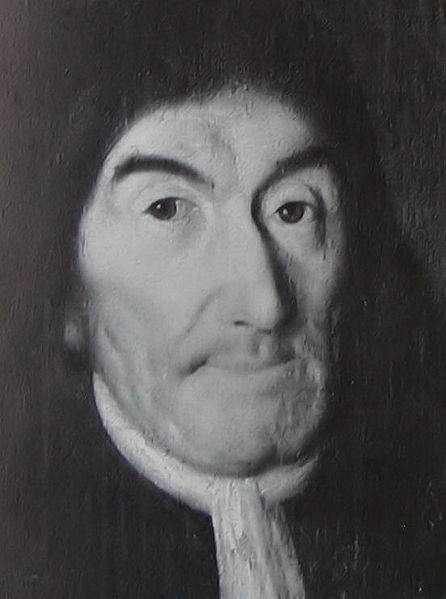<Back to Index>
- Explorer Louis Hennepin, 1626
- Illustrator Edward Lear, 1812
- Premier of Canada West Robert Baldwin, 1804
PAGE SPONSOR

Father Louis Hennepin, O.F.M. baptized Antoine, (12 May 1626 – c. 1701) was a Catholic priest and missionary of the Franciscan Recollect order (French: Récollets) and an explorer of the interior of North America.
Hennepin was born in Ath in the Spanish Netherlands (now in the province of Hainaut, Belgium). In 1659 Béthune, the town where he lived, was captured by the army of Louis XIV of France.
At the request of Louis XIV the Récollets sent four missionaries to New France in May 1675, including Hennepin, accompanied by René Robert Cavelier, Sieur de la Salle. In 1678 Hennepin was ordered by his provincial superior to accompany La Salle on a voyage to explore the western part of New France. Hennepin was 39 when he sailed in 1679 with La Salle from Canada through the Great Lakes aboard Le Griffon to explore the unknown West. Local historians credit the Franciscan Recollect friar with being the first European to step ashore at the site of present day Hannibal, Missouri.
Two great waterfalls were brought to the world's attention by Louis Hennepin: Niagara Falls, with the most voluminous flow of any in North America, and the Saint Anthony Falls in what is now Minneapolis, the only waterfall on the Mississippi River. Most places named after Hennepin are found in the United States: Minnesota: Hennepin County, Minnesota, whose seat is Minneapolis, Hennepin Avenue, in Minneapolis, The Father Louis Hennepin Bridge, across the Mississippi River in Minneapolis, Father Hennepin State Park, in Isle, Minnesota, A Great Lakes wood - hulled steamer built in 1888 which sank in 1927, The city of Champlin, Minnesota,
the site historians report where he first crossed the Mississippi in
1680, holds an annual Father Hennepin Festival on the 2nd weekend of
June that includes a reenactment of Father Louis Hennepin crossing the
Mississippi River. Hennepin Island is in the Mississippi River at St. Anthony Falls. Although it is no longer an island, it extends into the river and houses the Saint Anthony Falls Laboratory at the University of Minnesota, a five unit hydroelectric plant, owned by Xcel Energy, and the Main Street substation – serving downtown Minneapolis. Father Hennepin Bluffs Park lies on the east bank of the Mississippi River adjacent
to Hennepin Island. It is administered by the Minneapolis Park and
Recreation Board and features picnic areas, a bandshell, and Heritage
Trail plaques. Hennepin Room at the Minneapolis Hilton. New York: Hennepin Road in Grand Island, New York, Hennepin Avenue on Cayuga Island in Niagara Falls, Hennepin Room at the Niagara Falls Conference Center in Niagara Falls, Hennepin Park, a park locate on the corner of 82nd Street and Bollier Avenue in Niagara Falls, Hennepin Hall, a residence hall at Siena College, Loudonville, New York, Hennepin Park, a park located in the East Lovejoy neighborhood of Buffalo, Hennepin Farmhouse Saison Ale (beer) from Brewery Ommegang in Cooperstown. Michigan: Point Hennepin, the northern tip of Grosse Ile, an island on the Detroit River south of Detroit, Hennepin Street in Garden City, MI, Hennepin, significant as the first self - unloading bulk carrier. Wreckage is located west of South Haven. Illinois: The city of Hennepin, Hennepin Room at Starved Rock Lodge and Conference Centre in Utica. The few places outside the United States are found in Canada, all in Niagara Falls, Ontario: Father Hennepin Separate School, Ontario Historical Plaque at Murray Avenue and Niagara River Parkway, Hennepin Room at Sheraton Fallsview. Hennepin is the author of Description de la Louisiane (Paris, 1683), Nouvelle
découverte d'un très grand pays situé dans
l'Amérique entre le Nouveau - Mexique et la mer glaciale (Utrecht, 1697), and Nouveau voyage d'un pays plus grand que l'Europe (Utrecht, 1698). The truth of much of Hennepin's accounts has been called into question — or flatly denied — notably by the American historian Francis Parkman. In the words of the 1913 Catholic Encyclopedia:
Hennepin never returned to North America and died in Rome.